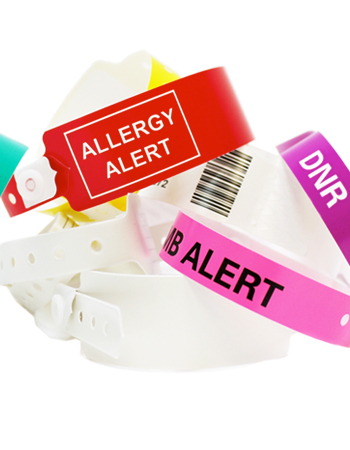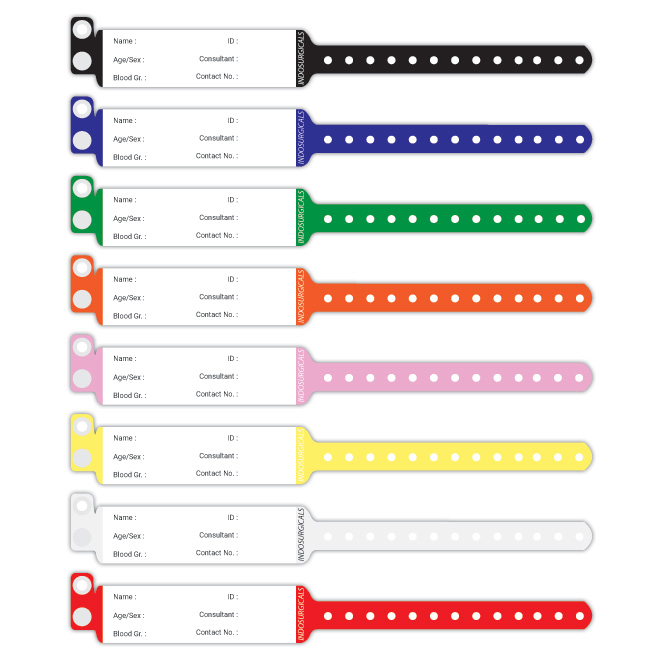Why Every Medical Facility Needs To Execute Patient Identification Band for Its Patients
Why Every Medical Facility Needs To Execute Patient Identification Band for Its Patients
Blog Article
Improving Patient Treatment With Effective Recognition Bands
The application of effective identification bands is a pivotal aspect in boosting client treatment within medical care settings. These bands not just serve to minimize the risks connected with client misidentification but likewise streamline communication among medical workers, thus cultivating a more secure environment. Different kinds of recognition bands cater to particular needs, from resilient wristbands for adults to specialized bands for infants and vital cases. As the landscape of person identification progresses, one have to take into consideration the implications of these systems on total medical care shipment and patient results. What innovations await in this vital location?
Significance of Patient Recognition
Ensuring precise client identification is important in health care settings, as it directly affects the safety and top quality of care given. Misidentification can cause severe errors, including administering the wrong medicine, executing wrong procedures, or miscommunicating crucial individual information. Such errors not just threaten client security yet can likewise result in lawful ramifications and decreased trust fund in medical care systems.
Reliable person identification is fundamental to establishing a secure setting where clients receive personalized and appropriate treatment. It facilitates the precise documentation of clinical histories, allergic reactions, and therapy plans, making sure that health care service providers have access to important information in all times. Additionally, robust identification protocols help simplify interaction amongst medical staff, boosting cooperation and lowering the threat of mistakes.

Types of Recognition Bands
Recognition bands play an essential duty in preserving precise person records and enhancing safety and security within health care environments. Different kinds of identification bands are used to cater to the specific needs and needs of various person populations.

An additional type is the ankle band, which is specifically useful for babies and babies, guaranteeing that recognition remains undamaged even throughout treatment treatments. Specialty bands, such as those for allergic reaction alerts or fall risk indicators, offer additional layers of security by drawing instant attention to important individual conditions.
Recently, digital recognition bands have acquired appeal, incorporating barcodes or RFID modern technology that can be checked to rapidly obtain client data. These bands improve process and decrease the threat of human mistake throughout patient recognition procedures.
Advantages of Effective Identification
Reliable identification of patients with using identification bands contributes significantly to general client security and care top quality. By ensuring that each person is properly determined, doctor can successfully match medical treatments and procedures to the proper person, reducing the danger of errors. This is specifically crucial in atmospheres with high person turn over, where the possibility for misidentification is higher.
In addition, efficient identification bands boost interaction among healthcare teams. Clear and exact client recognition fosters collaboration and ensures that all staff member recognize an individual's certain needs and clinical history. This interaction is important for supplying collaborated treatment, specifically in emergency scenarios where time is essential.

Eventually, effective identification with the use of identification bands not only safeguards people but likewise promotes a culture of safety within medical care facilities (Patient Identification Band). By focusing on accurate identification, health care companies can enhance outcomes and boost the general person experience
Implementing Identification Equipments
While the significance of person identification is well identified, the application of robust identification systems positions a complicated challenge for health care organizations. Developing effective recognition systems calls for a thorough technique, encompassing modern technology, workers training, and process her explanation integration.
First, organizations must select appropriate recognition innovations, such as barcode scanning, RFID, or biometric systems. Patient Identification Band. These modern technologies must be evaluated based upon cost, functionality, and compatibility with existing infrastructure. A pilot program can aid identify possible issues before major application
Next, extensive training for staff is crucial. All personnel need to understand the relevance of accurate client recognition and excel in making use of the chosen innovations. Normal training updates and assessments can strengthen ideal practices and guarantee continued compliance.
In addition, medical care organizations ought to create standard procedures for client recognition throughout all divisions, minimizing discrepancies and improving communication. Regular audits can assist recognize voids in adherence to these protocols.

Ultimately, an effective implementation of identification systems not just boosts person safety and security yet additionally promotes a culture of accountability and diligence within medical care setups, making sure reputable and consistent patient treatment.
Future Trends in Individual Recognition
Innovations in modern technology are readied to reinvent individual identification practices in medical care settings. The integration of biometric recognition techniques, such as fingerprinting and facial acknowledgment, is anticipated to enhance precision and safety. These innovations can significantly lower the danger of misidentification, ensuring that people get the correct therapies and medications.
In addition, the application of blockchain technology for person records is obtaining traction. This decentralized strategy can supply a tamper-proof and safe technique for taking care of patient identities, thereby simplifying access to essential info throughout different doctor.
One more fad is the enhancing use mobile wellness applications that utilize QR codes for patient identification. These applications permit for real-time updates and easy access to patient data, encouraging healthcare experts to make enlightened choices swiftly.
Furthermore, fabricated intelligence (AI) is poised to play a crucial role in evaluating individual recognition data, determining patterns, and forecasting possible identification errors prior to they take place.
As these technologies evolve, they guarantee not just to improve person safety however additionally to boost the overall efficiency of healthcare delivery systems. Accepting these technologies will certainly be essential for future-proofing client treatment methods.
Verdict
In verdict, reliable recognition bands are crucial for boosting person safety and security and care top quality within medical care setups. By decreasing the threats linked with misidentification, view it now these bands facilitate prompt and exact info retrieval, ultimately improving communication amongst doctor. The execution of durable identification systems not only cultivates a society of security but also placements health care organizations to adapt to future trends in person recognition innovation, making sure optimal outcomes for people in varied medical environments.
As the landscape of person recognition progresses, one should consider the effects of these systems on general healthcare distribution and individual outcomes.Reliable client identification is basic to establishing a safe and secure atmosphere where clients obtain proper and individualized care. Eventually, prioritizing efficient patient recognition techniques not just click here to read fosters a society of safety however also contributes to boosted client end results and overall satisfaction with health care solutions.
Effective identification of people through the usage of recognition bands contributes significantly to general person safety and care high quality. The execution of durable identification systems not just cultivates a culture of security yet also positions health care establishments to adapt to future patterns in individual recognition technology, guaranteeing ideal end results for patients in diverse medical atmospheres.
Report this page